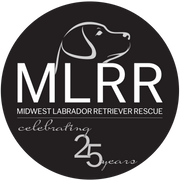Heartworm Treatment
The American Heartworm Society recommends the following heartworm treatment protocol for dogs. This method effectively eliminates most heartworm infections when closely followed. The overall goals of treatment are to safely and successfully eliminate current adult and immature heartworms, prevent new infections and minimize treatment related complications in the dog. The recommended treatment consists of the 5 steps outlined below.
Initial Treatment (Day 0)
From the moment the dog is diagnosed with heartworm disease the dog must be kept strictly confined! That means the dog should be restricted to a very small area at all times throughout the entire treatment period (the use of a crate may be necessary), and continuing for 6 to 8 weeks after the last injection of melarsomine (the drug that kills adult heartworm). To ensure exercise restriction, the dog must be kept on a leash when going outside. The veterinarian will tell you when it is permissible to gradually allow your dog to exercise again. The dog will be started on a once-monthly medication called a “preventive,” to kill immature heartworms and prevent new infections from developing. You should continue to give it to the dog throughout treatment as well as for the rest of his/her life. The dog will also be given the antibiotic doxycycline or minocycline for 30 days. This medication kills bacteria which live in the heartworms. These bacteria help the worms survive and reproduce. They also may cause worsening inflammation when adult heartworms die. By giving this antibiotic prior to the medication, we decrease the likelihood of complications from the treatment and optimize the chance for complete elimination of the infection.
First Adulticide Treatment (Day 60)
Two months after starting heartworm preventive, you will need to bring the dog to the vet for the first injection of melarsomine. Because complications can occur, your veterinarian might require the dog to stay in the clinic for observation. Upon discharge, the veterinarian may also prescribe prednisone or another anti-inflammatory medication for the dog to reduce side effects.
Second Adulticide Treatment (Day 90)
One month after the first injection, two additional injections of melarsomine must be given 24 hours apart. Once again, the dog may need to stay at the vet during this treatment period.
Interim Assessment of Health and Microfilaria Status (Day 120)
The veterinarian will examine the dog to determine his/her status following treatment. This examination will include a careful physical examination with an emphasis on the heart and lungs as well as testing for circulating heartworm microfilaria. This interim assessment will help the veterinarian determine when the dog can gradually resume more vigorous physical activity. If microfilaria are still present, the veterinarian may prescribe an additional medication to help eliminate them and then retest at Day 150 to assess effectiveness.
Final Assessment of Efficacy (Day 365)
The veterinarian will test the dog’s blood to assess the success of adulticide treatment. The goal is to eliminate all stages of heartworm from the dog.
Home Care – Your Responsibility
Throughout the recovery period, please watch your pet for coughing, gagging, vomiting, diarrhea, or loss of appetite. Excessive sluggishness, respiratory distress, and coughing up blood are signs of a serious problem that require immediate veterinary attention. The most important thing you can do to minimize complications during treatment is to restrict your pet’s exercise before, during and after the melarsomine injections. When adult worms die, they collapse and are pushed deeper into the smaller branches of the vessels that supply blood to the lungs. Because exercise increases blood flow to the lungs, it increases the likelihood that dead worms will block blood flow. This can result in severe complications and possibly death. The importance of restricting your dog’s activity cannot be overemphasized.
Dogs with heartworm disease can live high-quality lives as long as they are given appropriate care. After completing treatment and following the veterinarian’s recommendations on heartworm disease testing and prevention, the chances of any long-term effects are very low.
Courtesy of the American Heartworm Society, with edits.
